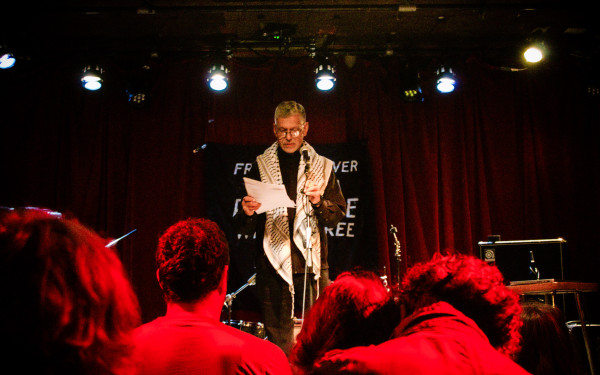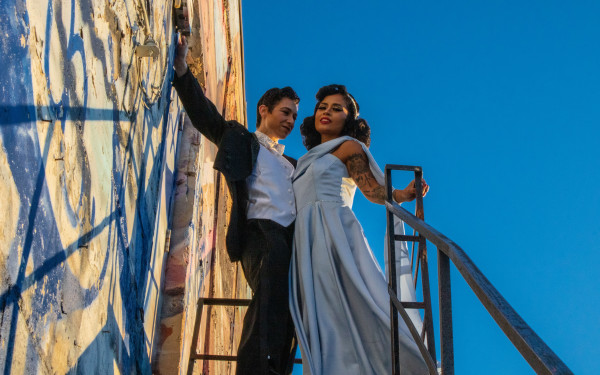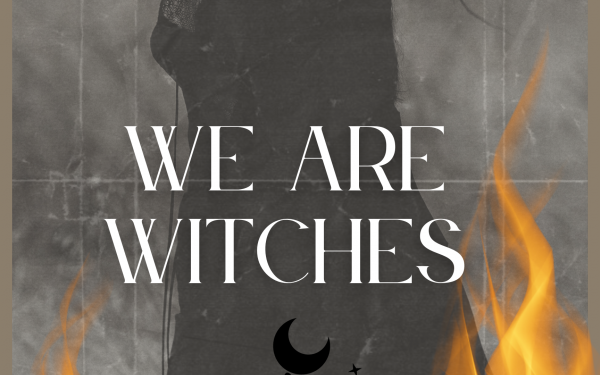Miss Chief Eagle Testickle: Her true story in her own words
Kent Monkman and Gisèle Gordon’s genre-bending literary debut challenges colonial “truths”
It is no hyperbole to describe Cree artist Kent Monkman as a superstar in the contemporary art world.
Renowned for his large-scale oil paintings which riff on 19th century European art with a bold Indigenous and queer gaze, his towering career has since led him to branch into other mediums, such as video installations and performance art, with his long-time collaborator Gisèle Gordon, a settler writer and artist in her own right.
On Monday, Nov. 20, the Concordia fine arts faculty and Penguin Random House co-hosted the much-anticipated Montreal book launch of Monkman and Gordon’s latest project: The Memoirs of Miss Chief Eagle Testickle: A True and Exact Accounting of the History of Turtle Island.
The progeny of six years of intense artistic collaboration and historical research, The Memoirs of Miss Chief is a labour of love in every respect. Published into two beautifully produced volumes, it is interspersed with full-colour renderings of Monkman's artwork, spanning his twenty-year career. The book is also infused with many Cree words and expressions, highlighted in red, and a glossary for non-Cree speakers.
As Monkman’s literary debut, The Memoirs of Miss Chief represents an undeniable pivotal point in his long and illustrious career. No surprise there that, according to Marc Weiser, a lead organizer and supervisor of the strategic initiatives portfolio in the fine arts faculty, the event was completely sold out the day after it had just been announced.
When The Link arrived at the venue, a volunteer manning a table full of Miss Chief copies informed the public that they were already nearly sold out of signed editions. The roomy auditorium of the Bibliothèque Nationale was buzzing with fans of Monkman’s work, and their excitement was sincere and palpable.
_900_590_90.JPG)
After a brief introduction to the night’s speakers, a surprise guest was announced: Miss Chief herself—with her bejeweled flair, chunky heels, fuschia-coloured lips, and long, luscious black wig—made a rare and glamorous appearance to a roaring applause from the audience. After an animated reading of some select chapters, she retired backstage, and Monkman soon emerged to discuss his newly-published work along with Gordon and fellow Indigenous artist Skawennati.
Who is Miss Chief Eagle Testickle? More than just a recurring figure in his artwork, Monkman described her as an idea that “embodies Indigenous concepts of gender and sexuality.” Miss Chief, as a time-bending, shape-shifting, genderfluid alter-ego of Monkman, allows the artist to create a striking lived-in persona in his artwork who “looks back at the settler gaze.” Though Miss Chief was first conceived as a figment of satire, this project gave Monkman and Gordon the opportunity to shape her into a fully-realized character; one who is deeply involved in Turtle Island’s history—from prehistoric times all the way to the present day—and actively engaged in the histories of both its First Nations and settler peoples. Her lively narration thus offers readers a “more truthful” reinterpretation of this country’s history.
Miss Chief’s Memoirs are far from being her swan song. Towards the end of the discussion, Monkman hinted at several future projects which also center around the character, including a cycle of new oil paintings. Now that she has a story of her own, the possibilities are endless, Monkman said.
Attendees Evelyn, a sculpture major, and Chloe, a studio arts major, who had learned about Monkman’s work in their art history courses, expressed how excited and happy they were with the event. “It’s nice to see all of his work compiled like this, because it allows people to retrace his works chronologically. I feel so inspired,” Chloe said.
Evelyn and Chloe were able to attend the event thanks to the fact that it was offered free of charge to all students. Lead organizer Marc Weiser underlined how accessibility was vitally important when organizing the event. “For me, it was all about opening up space for our students, and particularly for our Indigenous students,” Weiser said.
The Memoirs of Miss Chief, more than just a cumulative achievement in Monkman’s career, asks readers to challenge colonial and Eurocentric understandings of “truth,” which often exclude Indigenous perspectives, past and present. When speaking to the book’s timeliness, Weiser said that the fundamental anti-colonial ideas of Monkman’s work may, sadly, always be relevant. “We’re at a time right now, globally, where questions of colonialism and gender identity are not just academic—it’s a matter of life and death. It’s important for that conversation to happen again and again. To hear these ideas we may discuss internally, being talked about by someone like him—It’s a reminder that we need to keep fighting,” Weiser said.
This article originally appeared in Volume 44, Issue 7, published November 28, 2023.


_600_832_s.png)




